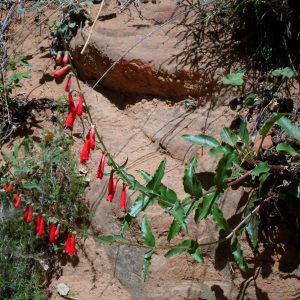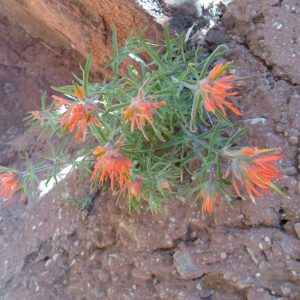Hello!
My name is Catherine Reuter. I am here in Cedar City for a second round as a CLM intern. In 2010, the program provided me with an amazing experience working with the Bureau of Land Management in eastern Montana. Through this opportunity, I built confidence and skills and cemented my desire to participate professionally in conservation fieldwork. But more than anything, that summer showed me how much I have to learn about conservation and left me with innumerable questions.
So I am back this year working again at the BLM hoping to explore some of these questions and no doubt generate new ones! This field office deals with many of the same issues as Miles City Office. Sage grouse are a huge concern in Utah as they are in Montana, prairie dogs as well. However, while energy/mineral development was a huge factor in MT, here it is almost non-existent in the Cedar City Office. So I am excited to build on issues I already have some experience in. But southwestern Utah is NOT eastern Montana! On a basic level the habitats are much different, drier, less diverse plant makeup, the wind (avg. 37mph today!) comes tearing across the Great Basin Desert till it strikes the mountains that begin in earnest behind Cedar City. My nostrils suffered terribly the first week from the desiccated air, so many bloody boogers! But my body is adjusting. Coming from the east coast (my home is in NE Georgia, which is humid and really lush) I’ve do have a lot to adjusting to do. My eyes already ache for green.
But the landscape has so much to offer in its own unique way. In the evening, the low sun just glows on the area’s red rocks and cast deep shadows off the juniper trees and sagebrush. The coloration is more subtle, grey-blues and purple greens. And I’ve already found pockets of verdure. The other night for example we hiked up a small box canyon to survey for a Mexican spotted owl. We will be hiking up this canyon once a week to keep tabs on a male that has been living there for the past few years, sometimes with a mate. A stream runs through the canyon and it is alive with box elder trees, cottonwoods, willows, and horsetails. Apart from the owl (we got an amazing look at this rare species) we spotted a red, yellow, and black king snake, heard the cartoon call of a canyon wren (reminiscent of the sound of Mario falling off a cliff), and found some beautiful blooming penstemon. In fact the array of wild flowers everywhere have really stunned me, even though it has been an extremely hot and dry spring. All colors, purples, pinks, blues, orange, red, yellow, and many of them with a delicious scent. I can only imagine the glory of a wet spring!
Beyond wildflowers, the dry spring will also impact other field office activity: wildfire for example. Cedar City does a lot of fuels projects concerned with providing protection of local communities from the threat of fire. Often these projects (which frequently entail removing juniper and pinyon pine from areas to diminish the threat of fire) are coupled with goals for wildlife habitat improvement. This is a whole realm I’ve had little experience with and I look forward to learning more!
So far, the last couple weeks have been chock full of required training and reading to orient myself in the field office along with a couple of tantalizing days out in the field. On top of the owl survey, we’ve done some other surveying for another threatened bird species, the the southwestern willow flycatcher, along with some vegetation trend surveying for a fuels project. I’m just getting my feet wet and getting familiar with the plants and animals of the area. Can’t wait for the season to get into full swing! I am also excited because during this internship I will have the pleasure of working with another CLM intern on a day to day basis. It will liven up those long ten hour field days that I hammered out completely alone in Montana! So all in all its looking to be a good next few months; I am so thankful for the opportunity to explore new area and a new set of management paradigms and practices.



































